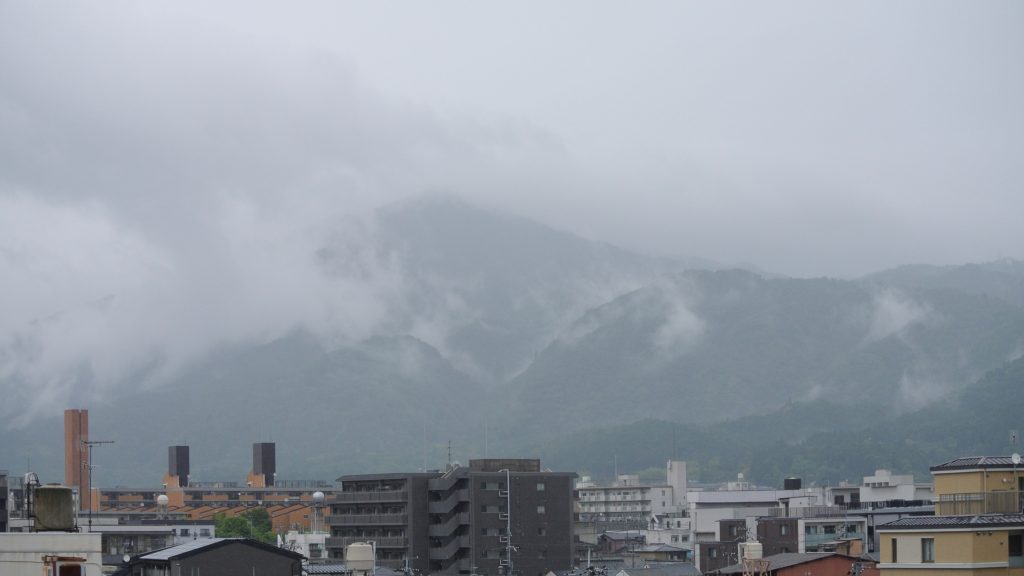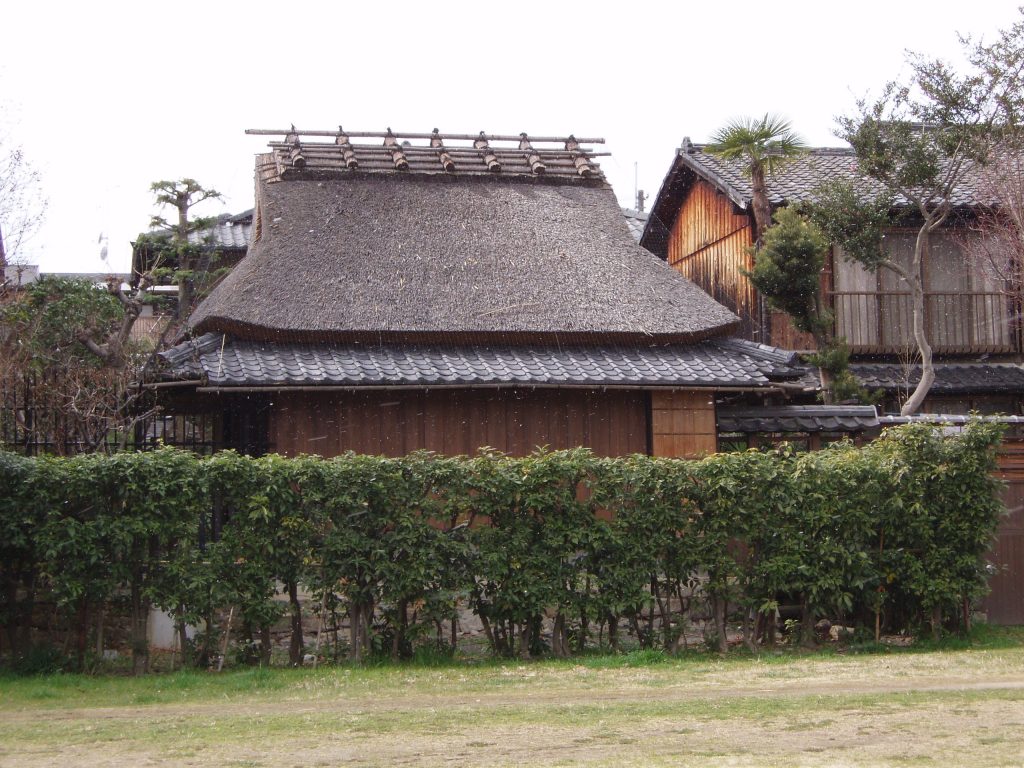
Sanshi suimei – purple mountains and crystal streams
So runs the epithet about Kyoto which the nineteenth-century historian Rai Sanyo used as the name for his study by the banks of the Kamogawa (the thatched cottage still stands next to Marutamachi; see photo below). From there he must have had a clear sight right along the Eastern Hills, including Mt Hiei. But why did he call the hills purple? I’m looking at them now, and they’re clearly dark green with lighter patches here and there. As the sun sets in the west, there’s a splash of crimson from the reflected skyscape before they become increasingly darker, then menacingly black.
The sixth-floor desk at which I’m sitting has enabled me to study the Higashiyama hills for some twenty years now. I’m familiar with their changing colours, not just during the course of a day but during the different seasons. On top of that, they respond to weather conditions, particularly in terms of freshness and brightness. There are moments following rainfall when they stand so pristine I could swear they have moved a good mile closer.
Yet for all my observations, only by a stretch of the imagination have I been able to see the mountains as purple. Sometimes I even stare at the wooded slopes and will myself to see purpleness in them. Unlike Rai Sanyo, I just can’t do it. For me they are variations on the green spectrum, from verdant to brownish. But then I’m not living in the same era as Rai Sanyo. I’m looking over the roofs and concrete buildings of a modern urban jungle; he was looking out from a sacred city inhabited by an emperor.
The historian was an early sympathiser with the imperial cause, and his writings were based on the thesis that the rightful rule of the emperor had been usurped by the samurai of the twelfth century. For him, the imperial home was the true capital of the country, surpassing Edo in splendour because of the benign figure living in Gosho. Sympathy with the imperial cause, I would suggest, affected his way of seeing.
From 604 Japanese Buddhism introduced a coloured code of ranking. Purple was reserved for the top class because it was hard to make the dye and therefore had scarcity value. Indeed, formerly only the imperial family had been allowed to wear it; now top ranking priests were entitled too. But still it remained a mark of great distinction, and in Noh plays for example it is only worn by kami or emperor’s immediate family. It seems then that Rai Sanyo was wilfully seeing purple in the mountains in order to elevate the emperor’s capital to top rank, as if nature herself was honouring Kyoto in this way. Perhaps, conditioned by his thinking, he genuinely did see them as purple. And the crystal-clear water too would have been symbolic of the purity of the emperor’s abode.
This was brought to mind recently when reading a passage by Nan Shepherd (1893-1981) about the violet mountains of Scotland. The trailblazing mountaineer writes inspiringly about the interconnectedness of mountain and human nature: “Place and a mind may interpenetrate till the nature of both is altered,” she wrote. “The air is part of the mountain, which does not come to an end with its rock and its soil. It has its own air; and it is to the quality of its air that is due the endless diversity of its colourings.” As someone with a fascination for the spirit of place, I find her words striking. We think of ourselves as separate from mountains, but in a very real sense we’re not. The hills are us. There is after all good reason why the football team was named Kyoto Purple Sanga! (As well as a Buddhist term for fellowship, Sanga refers to the mountains and rivers of Kyoto, for the kanji for mountain ‘山’ is read as ‘san’ and the kanji for river ‘河’ is read as ‘ga(wa)’.)

